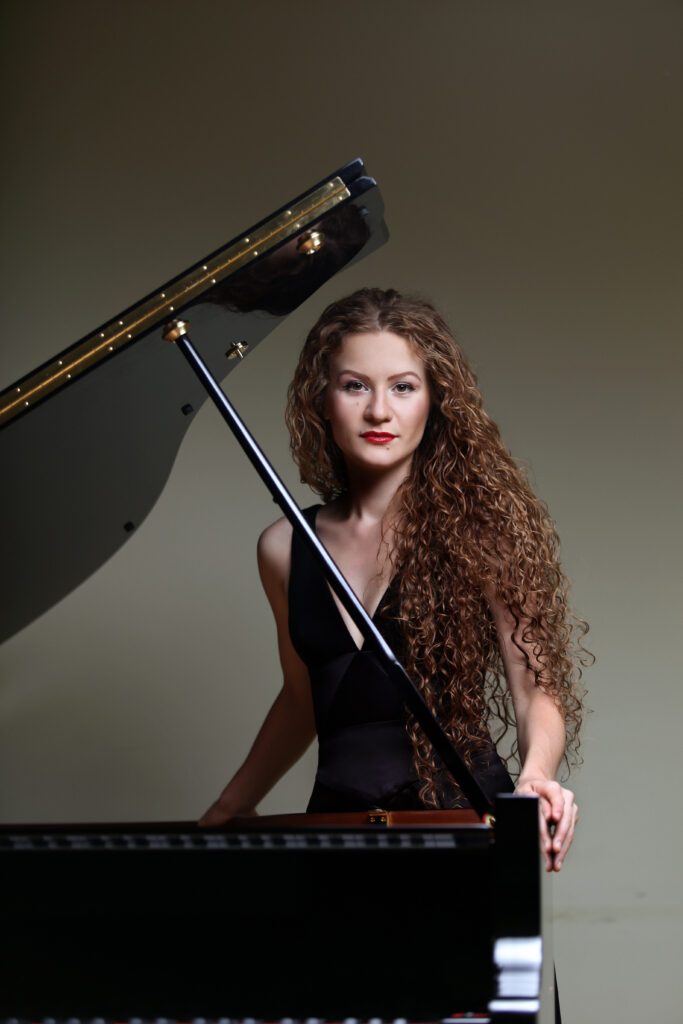Orchestra Miami serves up a feast of women’s music

The historic sanctuary of First Miami Presbyterian Church on Brickell Avenue was an appropriate setting Saturday night for Orchestra Miami’s celebration of the 100th anniversary of the passage of the 19th Amendment to the U.S. Constitution,which gave women the right to vote.
Honoring four “Miami Mujeres”(Miami women), the program featured works by four female composers. Despite a somewhat cavernous acoustic and a disappointingly small audience, the concert proved highly rewarding.
Cuban-American composer Tania León’s Ácana (2008) is a breezy soundscape inspired by a distinctive tree used for decorative effect in Cuba. Two trumpets sound a siren’s serenade to open and close the work and layered string and wind textures and harmonies suggest the tree’s growth. Artistic director Elaine Rinaldi led a tightly coordinated traversal, bringing out the singular timbres of the orchestral sections.
Amy Beach (1867-1944) was America’s first significant female composer and a highly regarded concert pianist. Her Piano Concerto in C-sharp minor was written in 1899 and dedicated to the legendary Venezuelan pianist Teresa Carreño, who never played the work. (Beach soloed in the 1900 premiere with the Boston Symphony Orchestra.) The four-movement, thirty-plus minute score is an old fashioned, unapologetically romantic showpiece.
Beach’s concerto proved a fine showcase for pianist Asiya Korepanova. There is some lovely thematic invention in the Allegro moderato first movement and Korepanova managed to draw a surprisingly wide dynamic range from the Yamaha grand. Her big, sweeping keyboard volleys from the outset made listeners sit up and take notice but her carefully etched soft playing was especially striking. In the lengthy cadenza, she radiated poetry and bombast in equal proportion.
There is more than a slight touch of Gallic seasoning a la Saint-Saëns in the Scherzo. Korepanova’s touch turned light and ebullient with fleet articulation of the rapid fragments of melody. The Largo is unabashed Rachmaninoff in rhapsodic mode. Korepanova captured the music’s passion and spacious breadth in warm and sizable tonal hues. The final Allegro could have come out of a Chopin concerto, complete with dance-infused secondary subject. Korepanova’s digital dexterity took the measure of Beach’s bravura writing and received a vociferous standing ovation.
Rinaldi offered firm support. Except for some initial raw brass playing, orchestral lines were forceful and exact. While Beach’s concerto has its derivative aspects, it is an attractive virtuoso vehicle that deserves more frequent performances.
The music of Florence Price (1887-1953) has recently been rediscovered. She was the first African American woman to have a composition played by a major American orchestra when Frederick Stock conducted the Chicago Symphony Orchestra in the premiere of her Symphony No. 1 in 1933. Like the music of her teacher George Whitefield Chadwick, Price’s work represents a pre-Copland Americana style that incorporated well- known folk and indigenous tunes into a sophisticated symphonic context. Her Concert Overture No. 2 is based on the spirituals “Let my people go” and “Every time I feel the spirit,” orchestrated in technicolor. The rousing work was played with panache that matched Price’s extravagant instrumentation.
Miami native and Coral Gables High School graduate Ellen Taaffe Zwilich was the first woman to win the Pulitzer Prize for music in 1983 for her Symphony No. 1, which closed the program. Subtitled “Three Movements for Orchestra,” the work is a bridge between Zwilich’s early, more acerbic scores and the more tonal works she has written in recent decades. Nearly forty years since its 1982 New York premiere by the intrepid American Composers Orchestra, the superbly crafted work still holds up well. Conceived in cyclical form with thematic material reappearing in each movement, the seventeen-minute canvass packs a plethora of invention into its brief time frame.
Brassy proclamations ring out over ethereal strings in the first section. The ringing of chimes over a string diminuendo near the end of the movement creates a memorable sonic effect. High, piercing harmonics in the winds and strings dominate the dark second movement. Brisk rhythmic figures drive the finale with brass rising over the ensemble in a memorable aural sunrise reprise, bringing the score full circle. Rinaldi conducted a muscular reading with plenty of swagger, particularly from the avuncular percussion and precise strings.
Honored at the concert for their contribution to the Miami community were business woman Aida Levitan, African American historian Enid Curtis Pinkney, historian and historic preservationist Arva Moore Parks McCabe and former Miami-Dade County Commissioner and philanthropist Ruth Shack.
Elaine Rinaldi conducts Orchestra Miami in Beethoven’s Symphony No. 6 in F Major (“Pastoral”) and Tchaikovsky’s Violin Concerto with Francesca Mendoza as soloist 8 p.m. March 13 at Pinecrest Gardens, 8 p.m. March 14 at the North Beach Bandshell in Miami Beach and 6 p.m. March 15 at Gateway Park in Sunny Isles Beach. The concerts are free. orchestramiami.org; 305-274-2102
Posted in Performances
Leave a Comment
Sun Feb 9, 2020
at 12:31 pm
No Comments
